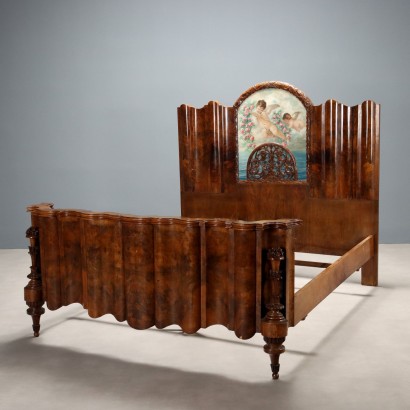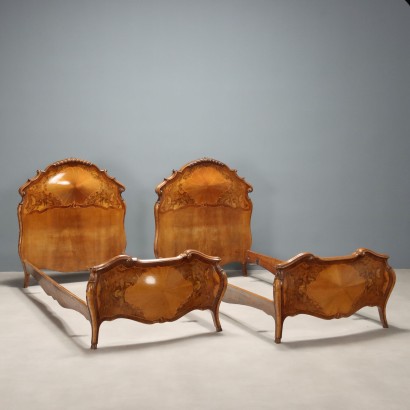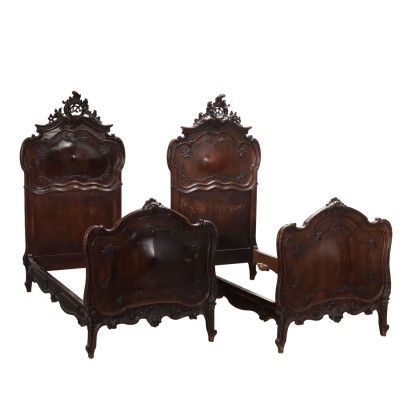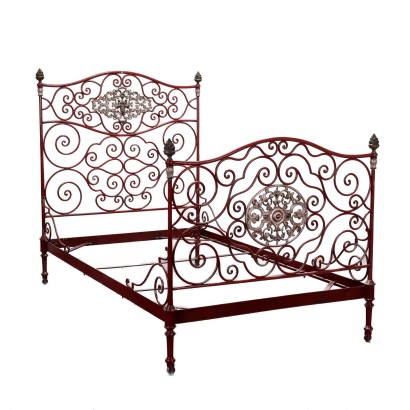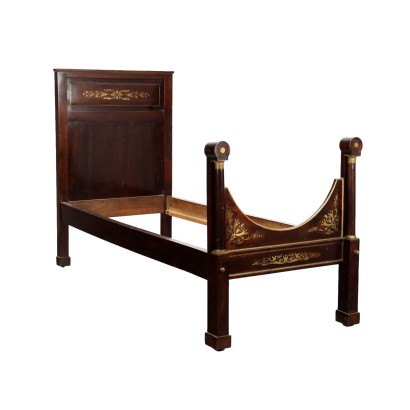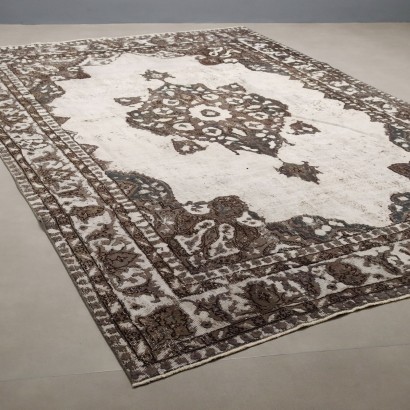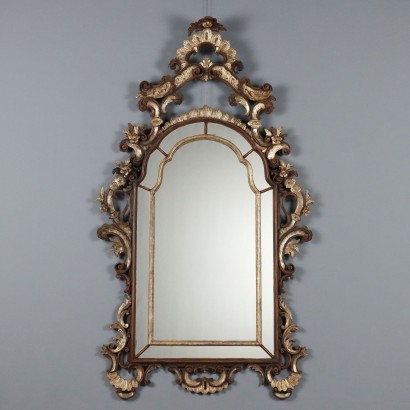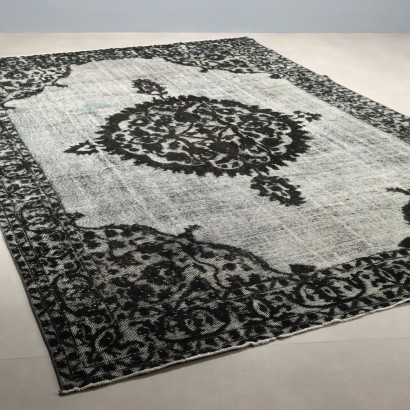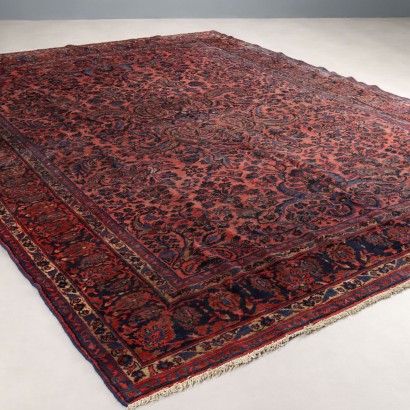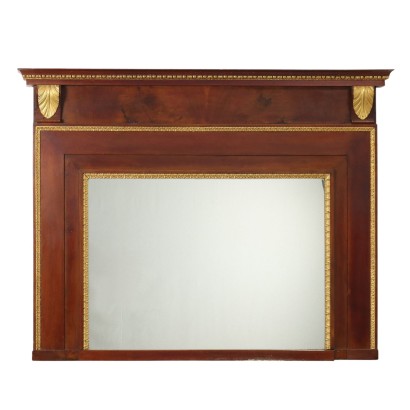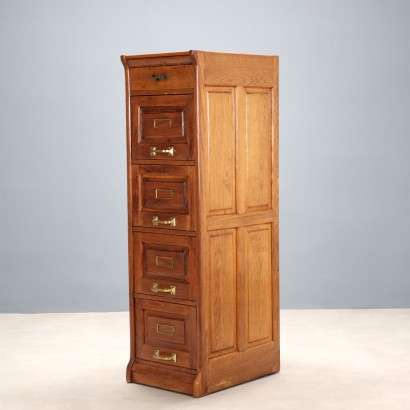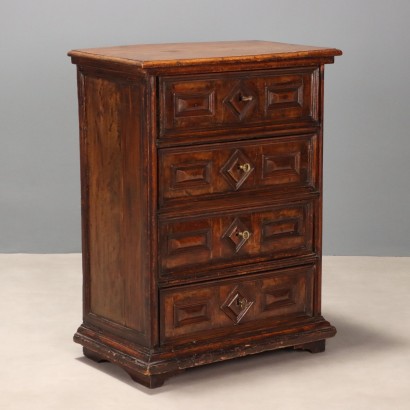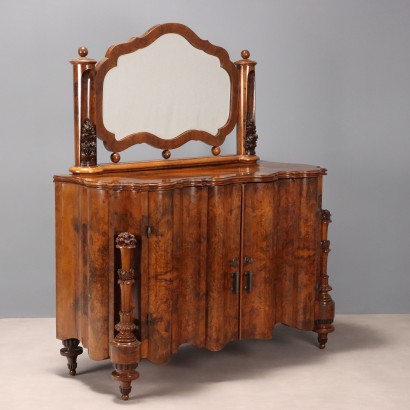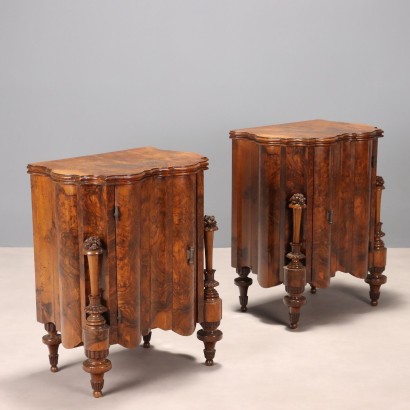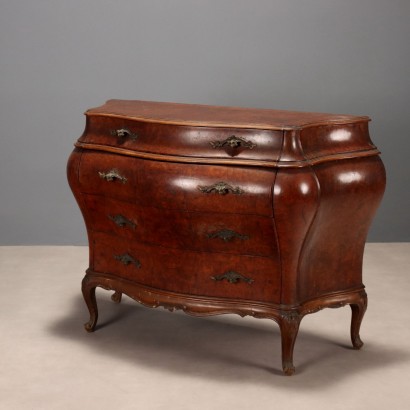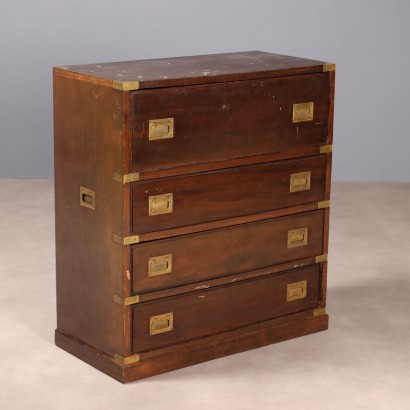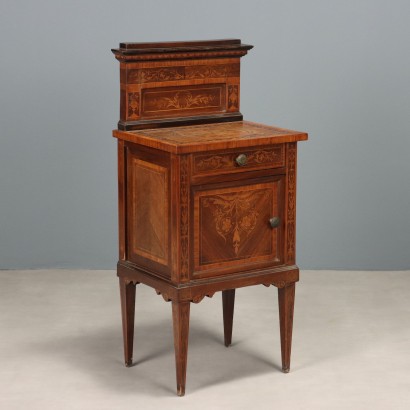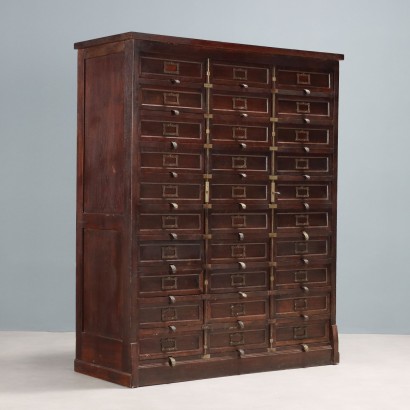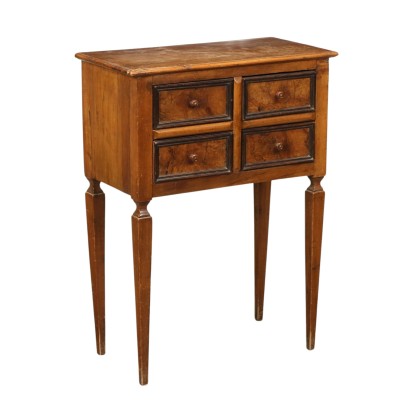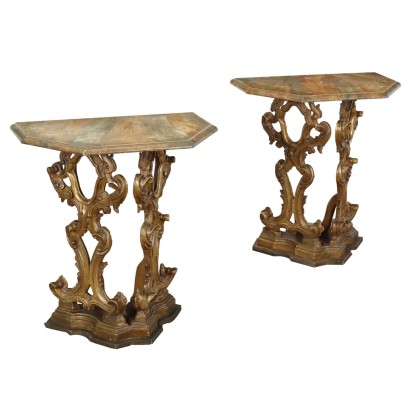Antique Bed Art Deco Walnut Walnut Burl Italy XX Century - Italy, Early XX Century
Features
Italy, Early XX Century
Age: 20th Century / 1901 - 2000
Main essence: Walnut
Material: Walnut Burl Veneer
Description
Art Deco bed in walnut and walnut burl, split-front footboard with turned and carved uprights. Headboard embellished with a central panel painted with a pair of winged cherubs and openwork carving with plant motifs. Italy, first half of the 20th century.
Product Condition:
This item requires restoration and polishing due to age and wear. We strive to present the actual condition of the piece as accurately as possible with the photos. If any details are unclear from the photos, the description will prevail.
Dimensions (cm):
Height: 40
Width: 162
Depth: 206
Bed frame maximum sizes (cm):
Height: 163
Width: 173
Depth: 211
Additional Information
Age: 20th Century / 1901 - 2000
20th Century / 1901 - 2000Main essence: Walnut
Walnut wood comes from the plant whose botanical name is juglans regia , probably originally from the East but very common in Europe. Light or dark brown in color, it is a hard wood with a beautiful grain, widely used in antique furniture. It was the main essence in Italy throughout the Renaissance and later had a good diffusion in Europe, especially in England, until the advent of mahogany. It was used for solid wood furniture and sometimes carvings and inlays, its only big limitation is that it suffers a lot from woodworm. In France it was widely used more than anything else in the provinces. In the second half of the eighteenth century its use decreased significantly because mahogany and other exotic woods were preferred.Material: Walnut Burl Veneer
Other customers have searched:
Approfondimenti
Scopri di più sui letti antichi con gli articoli del nostro blog:Un letto impero ci rivela le radici della nostra cultura
Un insolito Thonet
Sull'antiquariato in generale dai un'occhiata anche a:
Classic Monday: da un pezzo dei nostri magazzini alla storia dell'antiquariato
L'antiquariato dalla A alla Z: il Dizionario dell'Antiquariato
Il dizionario dell'antiquariato - Lastronatura
Il dizionario dell'antiquariato - Mascherone
Il dizionario dell'antiquariato - Natura morta
Il dizionario dell'antiquariato - Opificio
Il dizionario dell'antiquariato - Pastiglia
Il dizionario dell'antiquariato - Savonarola
Il dizionario dell'antiquariato - Rosone
Intaglio barocco con motivo a ricciolo
Product availability
The product can be seen at Cambiago
Immediate availability
Ready for delivery within 2 working days from ordering the product.

